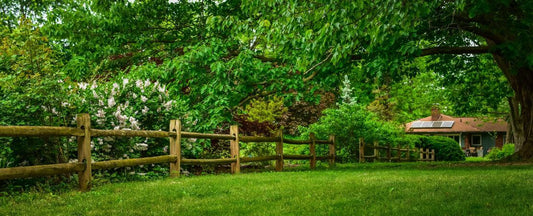Quick Tips to Attract Pollinators to Your Garden

Plant Pollinator's Favorites for an Earth-Friendly Garden
Planning a pollinator-friendly garden is as easy as picking out the best plants to make your bees, hummingbirds, and butterflies happy. Flowers are essential to the world's ecosystem. Bugs and animals of all types depend on flowers for nutrition and survival. Gardeners can do their part by planting varieties that benefit pollinators the most.
Did you know that bees pollinate flowers, trees, and shrubs but so do other animals and insects? Birds, bats, butterflies, moths, flies, beetles, wasps and small mammals are all also common pollinators. Bees, other animals, as well as the wind, can carry pollen from plant to plant.
Worldwide, approximately 1,000 plants grown for food, beverages, fibers, spices, and medicines need to be pollinated by animals in order to produce the goods on which we depend. Foods and beverages produced with the help of pollinators include blueberries, chocolate, coffee, melons, peaches, pumpkins, vanilla, and almonds. All things that we as humans love to treat ourselves to. I know I couldn’t live without my coffee and chocolate!
Pollinator Basics
What attracts pollinators to flowers?
Scent– bees and butterflies can’t resist fragrant flowers(neither can we!).
Color– Certain pollinators prefer certain colors of blooms! *see below for our favorites.
Flower shape– hummingbirds prefer tubular shaped blooms, while bees prefer flat open flowers.
High pollen/nectar– some plants are pollen-less while others have a type of pollen that isn’t spread by pollinators, but by the wind. Keep these things in mind when choosing flowers for your garden.
Quick Tips to Keep Pollinator's in Your Garden
Besides the type of flowers you plant, here are some tips to keep your garden attractive to pollinators:
1. Choose Native Species and Wildflowers
Wildflowers get bad press for seeming ‘weedy’, but these kinds of plants are what your local pollinators are used to and are the most beneficial to those populations.
2. Plant for Food Sources
Birds are attracted to seeds, berries, fruits, and nectar. While butterflies need flowers that have nectar, such as those in the aster family.
3. Offer a Variety of Plants for Nesting and Protection from Predators
Bushy shrubs, canopy trees, and groundcovers will provide the nooks and crannies birds and other wildlife need to nest and find food. Such plants also provide protection from sun, wind, and rain for all your essential garden critters.
4. Plant Flowers Away from High Traffic Areas
The less disruption from humans, animals, and machines the better. You don’t like being pestered while you’re trying to eat, do you?
5. Provide Water and “Puddling” Stations
Pollinating is thirsty work! Bees often get dehydrated during the day, so leaving them some shallow pools of clean water helps them tremendously. Add small stones to the pool so that they have something to stand on while they drink.
6. Avoid Using Pesticides
Try natural remedies to deter the “bad” bugs and invite “good” bugs to even the score (i.e. don’t kill spiders and other pest predators if you can manage it.)
7. Plant Colorful and Fragrant Flowers
Bees’ favorite colors are violet and blue and hummingbirds’ favorite colors are red, purple, and orange.
Pollinators, Their Favorite Colors, and the Native Flowers They Love
Pollinator |
Favorite Colors |
Native Flowers They Love |
| Bees | Violet, Blue, Yellow | Purple Coneflower (Echinacea purpurea), Wild Lupine (Lupinus perennis), Black-Eyed Susan (Rudbeckia hirta) |
| Butterflies | Red, Yellow, Orange, Pink, Purple | Milkweed (Asclepias spp.), Blazing Star (Liatris spicata), Butterfly Weed (Asclepias tuberosa) |
| Hummingbirds | Red, Purple, Orange | Cardinal Flower (Lobelia cardinalis), Scarlet Bee Balm (Monarda didyma), Trumpet Honeysuckle (Lonicera sempervirens) |
| Moths | White, Pale Pink, Light Purple | Evening Primrose (Oenothera biennis), Wild Bergamot (Monarda fistulosa), Phlox (Phlox spp.) |
| Beetles | White, Green, Dull Purple | Trillium (Trillium spp.), Magnolia (Magnolia virginiana), Paw Paw (Asimina triloba) |
| Flies | White, Yellow, Green, Brown | Skunk Cabbage (Symplocarpus foetidus), Goldenrod (Solidago spp.), Wild Ginger (Asarum canadense) |
| Bats | White, Green, Pale Purple | Agave (Agave spp.), Datura (Datura wrightii), Evening Primrose (Oenothera spp.) |
By choosing some key plants and following these easy tips your garden will become a balanced and healthy environment that all can enjoy!



